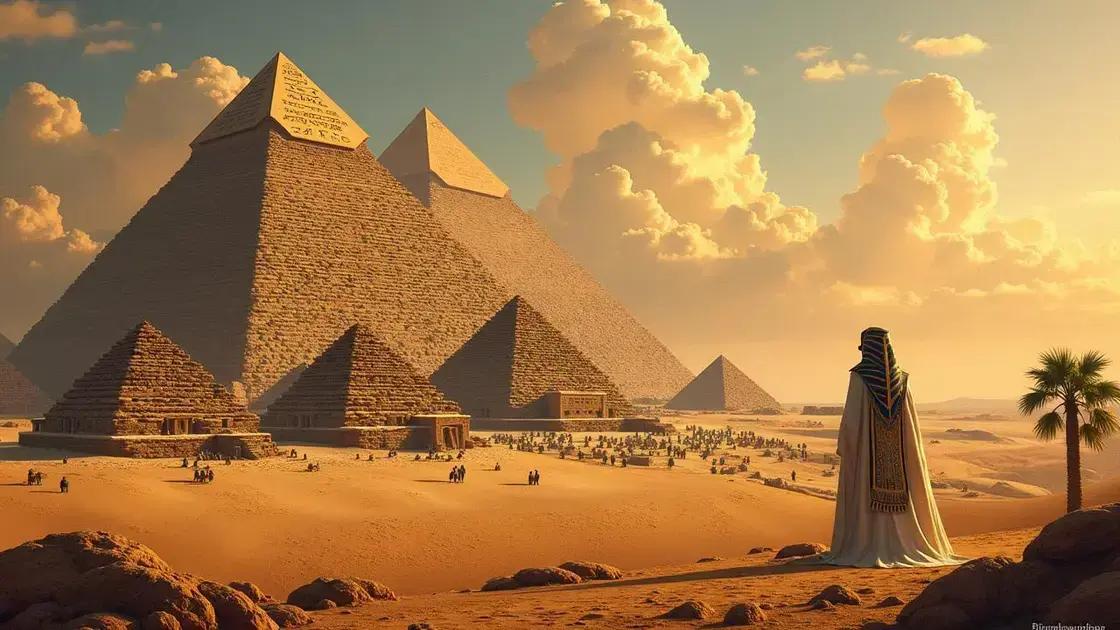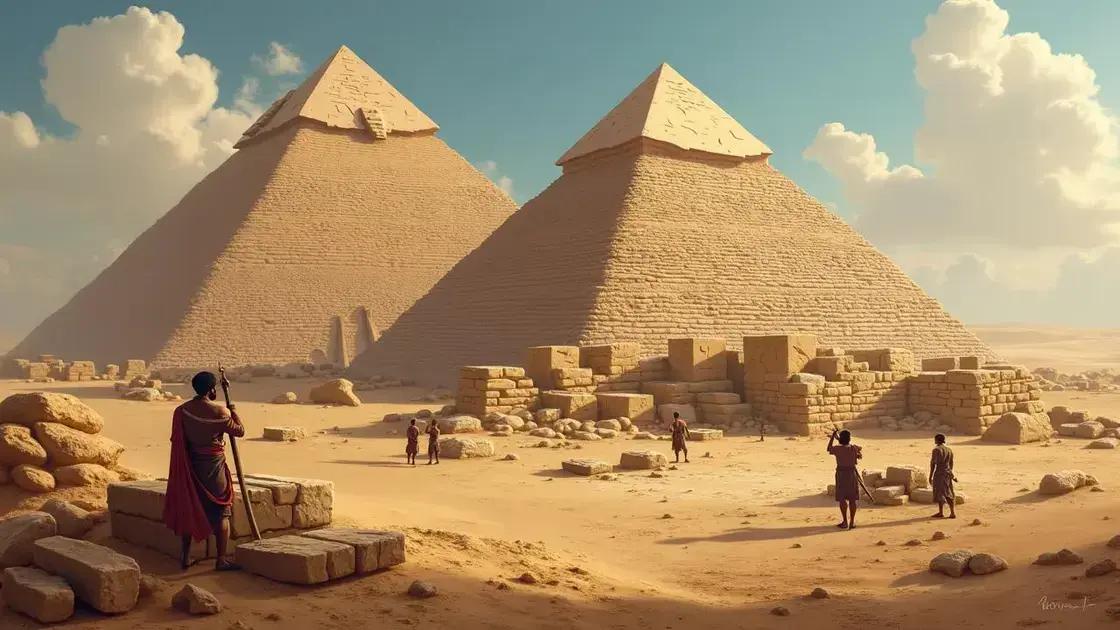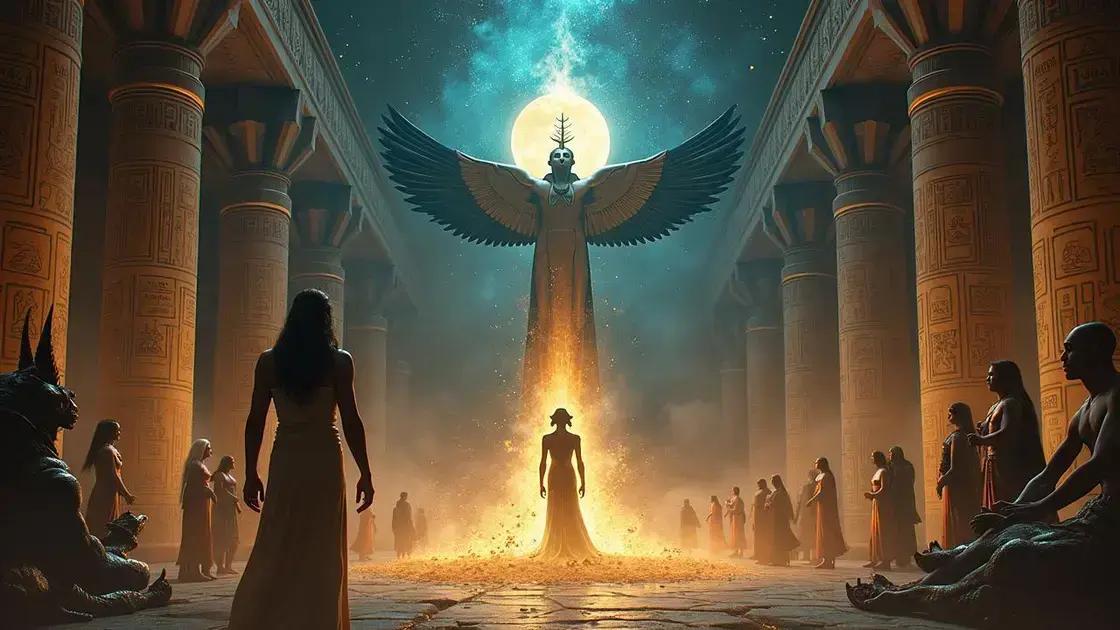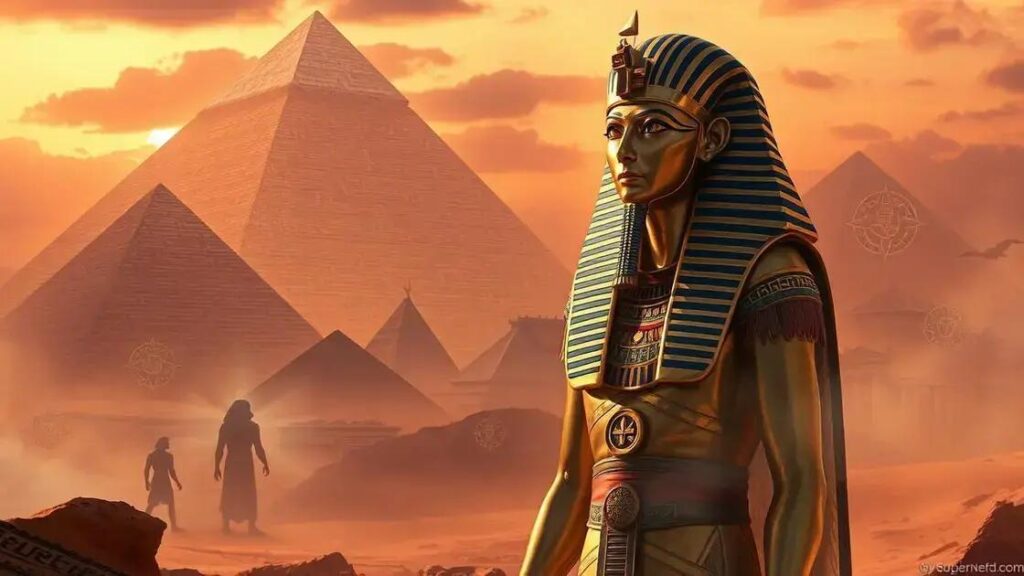The Egyptian pharaohs were ancient rulers known for their monumental achievements, such as the construction of pyramids, rich cultural contributions, and mystical beliefs. Key figures like Tutankhamun offer insights into their legacy through treasures found in tombs and the secrets of their magical practices.
What is the Trick of the Egyptian Pharaohs? This question has intrigued historians and enthusiasts alike. The ancient Egyptians were known for their extraordinary achievements, particularly in the realms of architecture, governance, and culture. Their rulers, the pharaohs, employed various mysterious methods that contributed to their lasting legacy. In this article, we will explore the secrets behind their remarkable success and the techniques that have sparked debate and curiosity for centuries.
The Legacy of the Pharaohs

The legacy of the pharaohs is not just a matter of historical record; it is a testament to their extraordinary influence on art, architecture, and governance. Pharaohs held absolute power and were seen as gods on Earth, which allowed them to establish rule that lasted for millennia.
Architectural Marvels
One of the most enduring symbols of their legacy is the construction of the pyramids. The Great Pyramid of Giza, built for Pharaoh Khufu, remains one of the Seven Wonders of the Ancient World. These monumental structures were not only tombs but also represented the pharaoh’s might and connection to the divine.
Cultural Contributions
The pharaohs also played a critical role in developing Egyptian culture. They sponsored myriad artistic endeavors, leading to stunning hieroglyphics, sculptures, and temples that conveyed their power and religious beliefs. The intricate art showcased in tombs was intended to help the pharaohs in the afterlife.
Political Systems
The political systems established by the pharaohs laid the groundwork for future governance in Egypt. They implemented a complex bureaucracy that effectively managed resources and leveraged trade across the ancient world. This centralization of power was key to sustaining their empire for centuries.
Moreover, the divine kingship concept epitomized their rule, which intertwined politics with religion. The pharaohs were viewed as intermediaries between the gods and the people, further solidifying their power and legacy.
Secret Techniques in Pyramid Building

Pyramid building in ancient Egypt was an incredible feat of engineering and organization. The secret techniques used by the pharaohs and their workers were vital to creating these monumental structures. Innovative tools and precise planning helped ensure the construction of perfectly aligned pyramids.
Construction Techniques
One key technique involved the use of ramps. Workers constructed long, straight ramps to transport heavy stone blocks from quarries to the pyramid sites. These ramps made it easier to haul materials upward as the pyramids grew taller.
Organization of Labor
Labor organization was crucial for successful pyramid construction. Instead of slaves, many historians believe a well-trained workforce was employed. Skilled laborers, stone cutters, and architects worked together, forming teams that specialized in different tasks. This system helped maintain high standards in construction.
Materials and Tools
The materials used also played a significant role in building these structures. The Egyptians sourced limestone and granite from nearby quarries. To shape stones and achieve smooth finishes, they utilized copper tools, pounding stones, and bronze chisels. These tools enabled them to create precise shapes, contributing to the pyramids’ engineering marvel.
Another interesting technique was the use of leverage. Ancient Egyptians used logs and rolling techniques to lift heavy stones into place. By employing simple machines, they increased the efficiency of their labor and minimized the risk of injuries during construction.
Egyptian Myths and Magic

Egyptian myths and magic were central to the culture and beliefs of ancient Egypt. These stories explained the mysteries of life and death, gods, and the universe. They helped people understand their place in the world and the power of the divine.
The Role of Gods
In Egypt, each god represented different aspects of life. For example, Ra was the sun god, believed to create life and bring light. Osiris, the god of the afterlife, governed the realm of the dead and judged the souls of the deceased. Egyptians paid great respect to these gods, fearing their anger and seeking their favor.
Magic in Daily Life
Magic was not only associated with gods but also practical matters of daily life. The ancient Egyptians believed in the use of spells and amulets for protection and wellbeing. They often wore charms to ward off evil spirits and illnesses. Magic was a tool to seek health, love, and fortune.
Mythical Creatures
The Egyptian pantheon included many mythical creatures. For instance, the Sphinx combined the body of a lion and the head of a human to symbolize strength and wisdom. Similarly, the Phoenix was a bird that represented rebirth. These creatures often appeared in stories that taught moral lessons and celebrated virtues.
Additionally, rituals involving magic were performed by priests who specialized in invoking the gods’ powers. These rituals included offerings, incantations, and elaborate ceremonies to ensure divine blessings and protection.
The Enigma of Pharaoh Tutankhamun

The Enigma of Pharaoh Tutankhamun continues to fascinate people around the world. Known as the “Boy King,” Tutankhamun ascended the throne at a very young age, around 9 years old. His reign lasted only a decade, and he died under mysterious circumstances at about 18 or 19 years old.
Discovery of the Tomb
In 1922, British archaeologist Howard Carter made a groundbreaking discovery in the Valley of the Kings: the tomb of Tutankhamun. This tomb was found nearly intact, filled with incredible treasures and artifacts. Among these were golden masks, chariots, and exquisite jewelry, all intended to accompany the pharaoh in the afterlife.
The Golden Mask
One of the most famous treasures is Tutankhamun’s golden funerary mask. This stunning piece is made of solid gold and inlaid with precious stones. The mask symbolizes the pharaoh’s royal status and was designed to protect his spirit in the afterlife.
Legacy and Mysteries
Despite the riches found in his tomb, much about Tutankhamun’s life and death remains a mystery. Some theories suggest that he may have suffered from health issues, including a cleft palate and bone abnormalities. Others speculate he could have been murdered or died from an accident.
Tutankhamun’s legacy also lies in the way his tomb has influenced modern discussions about ancient Egypt. The discovery led to a global fascination with Egyptology and sparked interest in ancient artifacts. His name is now synonymous with the richness of Egyptian culture and history, offering endless intrigue for historians and enthusiasts alike.
Unveiling the Secrets of the Egyptian Pharaohs
The exploration of ancient Egypt reveals the extraordinary lives and achievements of the pharaohs. From the rich legacy of monumental pyramids to the enigmatic allure of Tutankhamun, each aspect contributes to our understanding of this fascinating civilization.
Through their powerful myths and skilled craftsmanship, the pharaohs shaped not only their empire but also the beliefs and practices of their people. Their secrets, such as the techniques used in pyramid construction and the intricate magic ceremonies, continue to captivate the imagination of scholars and enthusiasts alike.
As we uncover these hidden treasures and insights, it is essential to remember the profound impact these rulers had on history, culture, and our collective sense of wonder towards the mysteries of the past.
FAQ – Frequently Asked Questions about the Egyptian Pharaohs
Who was Pharaoh Tutankhamun?
Pharaoh Tutankhamun, also known as the ‘Boy King,’ ascended the throne at a young age and is famous for his nearly intact tomb discovered in 1922.
What are pyramids and why were they built?
Pyramids were monumental tombs built for pharaohs to ensure their journey into the afterlife. They symbolize the pharaoh’s power and connection to the divine.
What role did myths play in ancient Egyptian culture?
Myths provided explanations for natural phenomena, shaped beliefs about the afterlife, and guided religious practices, influencing daily life and governance.
How were the pyramids built?
Pyramids were built using precise planning, ramps for transportation of stone blocks, and a well-organized workforce of skilled laborers, not slaves.
What treasures were found in Tutankhamun’s tomb?
Tutankhamun’s tomb contained many treasures, including a golden mask, jewelry, chariots, and other artifacts intended for his afterlife.
Why do people find ancient Egypt fascinating?
People are captivated by the mysteries, advancements in architecture and engineering, and the rich cultural history of ancient Egypt and its pharaohs.












